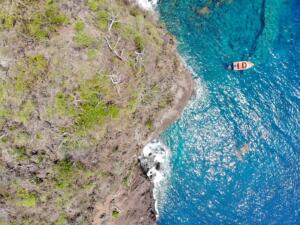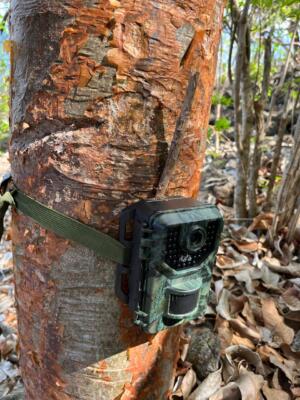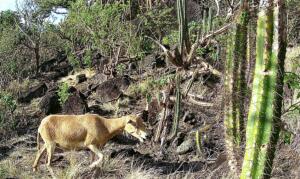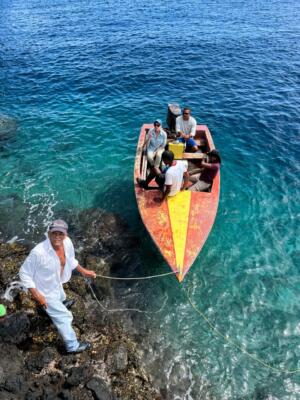Rewilding Pigeon Island

Seabirds are vital to the health of our ecosystems. They contribute to nutrient cycling, support marine food webs, and signal the overall wellbeing of our environment. However, their survival is increasingly threatened by invasive species that disrupt their nesting habitats and reduce their chances of breeding successfully.
On Pigeon Island, an offshore islet of ecological significance in the Grenadines, the St. Vincent and the Grenadines Environment Fund (SVGEF) is actively working to protect seabird populations through a dedicated project focused on habitat restoration and invasive species monitoring.

Our recent assessments have confirmed the presence of invasive animals such as goats, sheep, and rats. These species pose serious risks to nesting seabirds by trampling nests, consuming eggs, and degrading fragile habitats. The presence of these animals on the island is a long-standing issue that has severely impacted the suitability of the environment for seabird breeding.
In partnership with seabird expert Juliana Coffey of Canada and Vaughn Thomas of Carriacou, our SVGEF team received hands-on training in various elements of sea bird conservation and invasive species removal. This includes the identification of sea birds and best practices, the use of wildlife camera traps, bait stations, and tracking of animals. The camera traps are crucial in observing the invasive species allowing us to monitor them with minimal disturbance to the natural environment. The training included careful consideration for camera placement and observation, enabling us to gather high-quality data to guide our future actions.


The Pigeon Island monitoring team is largely made up of passionate, environmentally minded sea-faring community members from Bequia. Their local knowledge and commitment have been central to the success of this project. Over the course of several days, the team conducted land and sea-based surveys across Pigeon Island and nearby cays, deploying camera traps and collecting valuable data towards the baseline assessment of sea bird populations and the presence of invasive species.
This data collection not only confirmed the presence of harmful invasive species but also captured the extent of erosion and habitat loss affecting key nesting areas. Despite these challenges, our team was encouraged to observe signs of active seabird nesting on the island. The resilience of these birds, even in such compromised conditions, highlights the urgent need for targeted conservation interventions.

The data gathered through this project is helping SVGEF shape a long-term plan for invasive species removal and habitat restoration. By reducing the presence of harmful animals and restoring vegetation and nesting areas, we aim to create safer environments for seabirds to return and thrive. This project represents a broader commitment by SVGEF to preserve the biodiversity of our islands. It reflects the power of community involvement, science-based decision making, and regional collaboration in protecting the natural heritage of St. Vincent and the Grenadines.
As we continue this work, we look forward to building stronger partnerships and developing effective solutions to ensure the safety of Seabirds on Pigeon Island.


